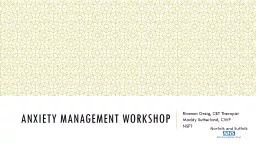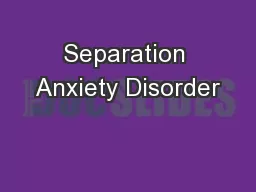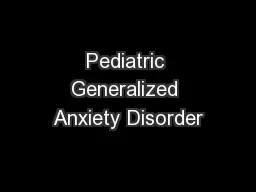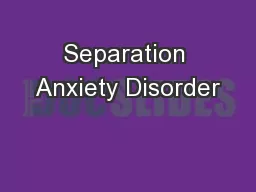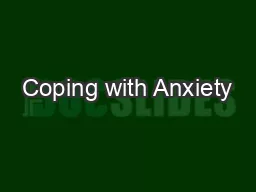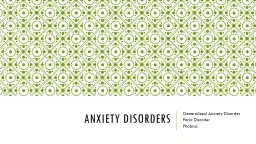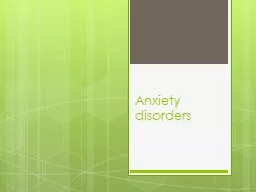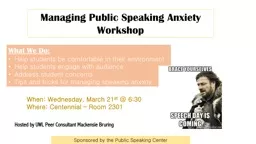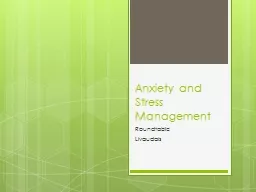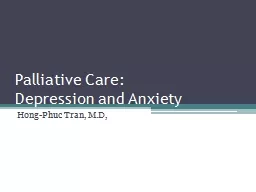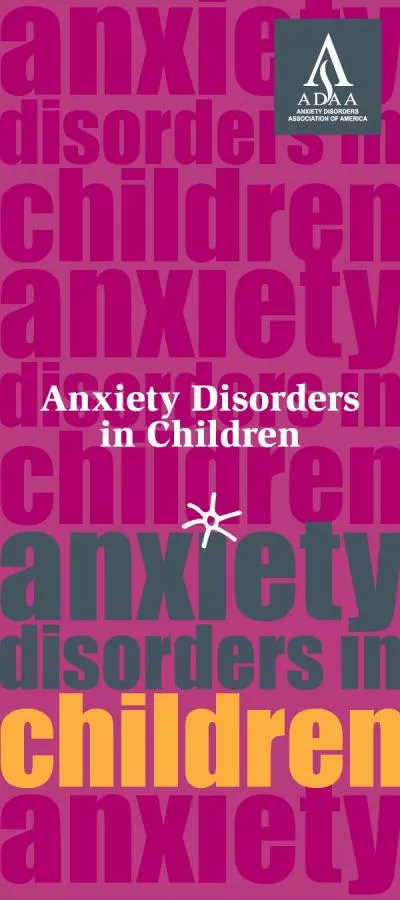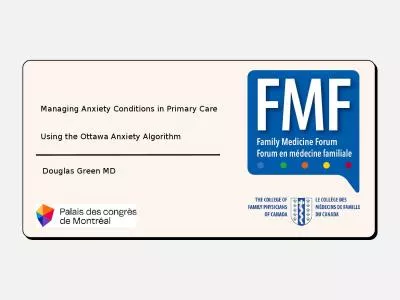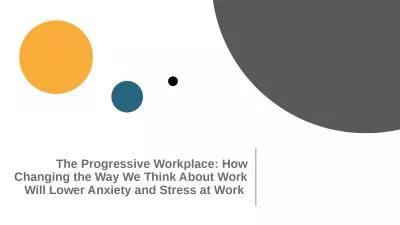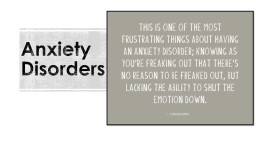PPT-Anxiety Management Workshop
Author : roxanne | Published Date : 2022-06-11
Riannon Greig CBT Therapist Maddy Sutherland CWP NSFT Introductions Who we are what we do W ho you are what you do What is Anxiety What is Anxiety Group discussion
Presentation Embed Code
Download Presentation
Download Presentation The PPT/PDF document "Anxiety Management Workshop" is the property of its rightful owner. Permission is granted to download and print the materials on this website for personal, non-commercial use only, and to display it on your personal computer provided you do not modify the materials and that you retain all copyright notices contained in the materials. By downloading content from our website, you accept the terms of this agreement.
Anxiety Management Workshop: Transcript
Download Rules Of Document
"Anxiety Management Workshop"The content belongs to its owner. You may download and print it for personal use, without modification, and keep all copyright notices. By downloading, you agree to these terms.
Related Documents

